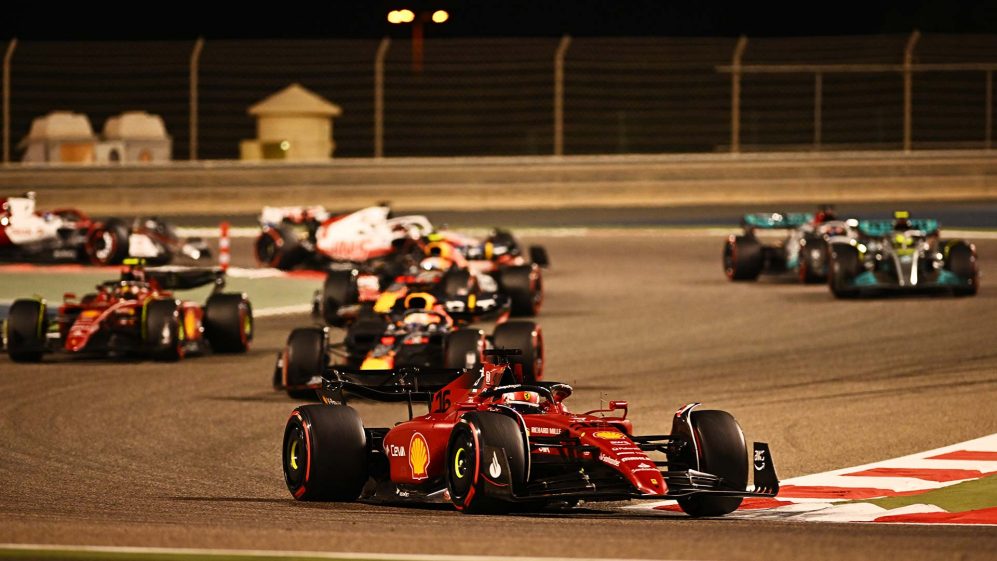By Maria Angella Fortich Fraija
Last week the new Formula 1 season started . For several years the pollution generated by this sport has been questioned and how it could be more sustainable with the environment, for this reason, with the new regulations each year they try to make the materials used more ecological. In 2021, they announced that by 2030, the FIA, the organizer of F1, guaranteed that all cars would have zero carbide emissions.
"Great Circus"
F1 has tried to tailor its ability to innovate in its cars to meet its sustainable development goals . Its goals are towards reducing emissions , manufacturing costs of cars and being a more faithful reflection of the cars that can be seen on the streets. Between 2025 and 2026 the power units will change in order to make the fuel greener and more ecological.
In the last decade of this sport they have implemented some changes little by little to see what the future of this sport would be like if it is sustainable. The most noticeable modifications have been hybrid engines and limitations on the use of certain chemical components.
The electrical part is one of the most important every year and that is why they begin to look for sponsors that bet more on sustainability and that have the same objectives imposed by the FIA. One of those plans is for the engine to be powered by a 100% sustainable direct fuel designed to be part of the "Net Zero Carbon" .

Net Zero Carbon
For the "Net Zero Carbon" to work, the first thing to work on is how to replace or make gasoline more ecological , since carbon emissions lie in this component. In the current season (2022), they will switch to using E10 fuel , this is a mixture of 10% ethanol and 90% fossil fuel . Another way to create ecological fuel is through coffee:
“ The process to transform coffee into biodiesel consists of three steps: first, the coffee waste is subjected to a process of extracting vegetable oil, using hexane as the extracting solvent; Subsequently, the extracted oil enters an esterification phase to reduce the fatty acid content. Finally, a transesterification reaction is carried out using as reagents: the oil content extracted from the previous processes and alcohol to obtain biodiesel as a product and glycerin, as a byproduct .
(If you want to know more about this process, click on the link https://savingtheamazon.org/blogs/news/sabias-que-podemos-producir-energia-a-partir-de-los-restos-del-cafe )
This has created a bit of controversy since many oil companies are sponsors of some teams and of the sport itself. For example, Mercedes with Petrobras or the organization with ARAMCO . Some sponsorship and use proposals were discussed with the Liberty Media organization, in which they commented that the fuel can be produced in the laboratory using waste, non-food biomass or municipal waste ; This would generate the reduction of greenhouse gas emissions and will reduce polluting emissions by 65%.

Photo taken from formula1.com
From the MGU-H to the MGU-K system
The objective with the modifications in the engines is to reduce by 50% the costs of the power units with options that can introduce ecological fuels. The current hybrid power will continue for the next four seasons and the fact is that the primary interest of the FIA is to go from the MGU-H system to the MGU-K , this electrical system makes the cars last 160 extra CV and the goal is that in the 2026 can be the main power source with 470CV.
As stated above, every 2030 goal in the sport is about moving to a V6 block to increase electric power and remove fuel flow limitation. The most significant thing that is wanted to reflect with this goes towards the vision or the idea of what must be done to have a greener society that is more committed to our planet Earth.

Photo taken from formula1.com
Formula 1 is one of the sports with the largest sponsors and with the greatest economic flow during the season, therefore, it is an area in which there are resources to help the environment , from the construction of their cars to the sponsorships that are they do outside of racing. The materials used as fuel should be sustainable and pro-ecological because if with just one practice they contaminate the area in which they compete, imagine throughout the season that there are 22 races and the car is tanked for two or three days they drive on the track.
It is not bad that we like it or we are excited to watch this sport almost every Sunday, but if we should question the environmental damage that is generated behind each race and seek as fans, how we can help mitigate the ecological deterioration that is created from from F1.




Comments
Yo tambien soy un fanático de la Fórmula 1 y vengo a dar mi opinión sobre este objetivo sustentable para 2030.
Mis sugerencias son:
1) Utilizar combustibles sostenibles en lo posible
2) Utilizar materiales que NO tengan derivados del petróleo para fabricar los autos, tipo usar otro material que no sea el Carbono
3) Aunque suene medio estupido, neumáticos que no tengan caucho, como si hubiera que construir nuevos neumáticos sin goma. Pero esto es imposible.
4) Utilicen todos los residuos
5) Reorganizar el calendario, tipo uno en donde haya la menor cantidad de km viajados posibles
Qué opinan ustedes?
Buenas, emm, vine a decir que también lo que la Fórmula 1 podría hacer para que sea MÁS SOSTENIBLE Y MENOS CONTAMINANTE es que pasen a Motores 100% Eléctricos.
Sinó podrían hacer lo que leí en esta página que también está muy bien lo que dijeron.